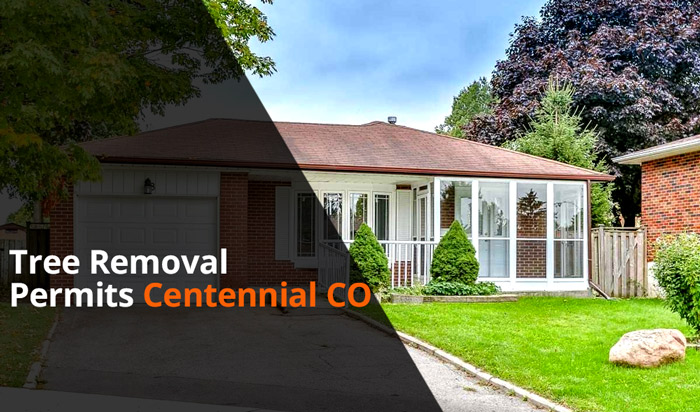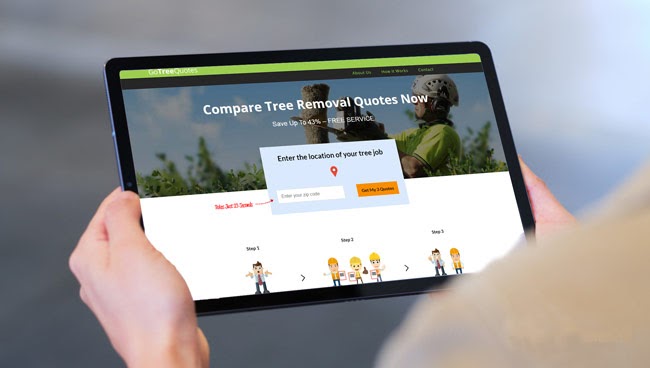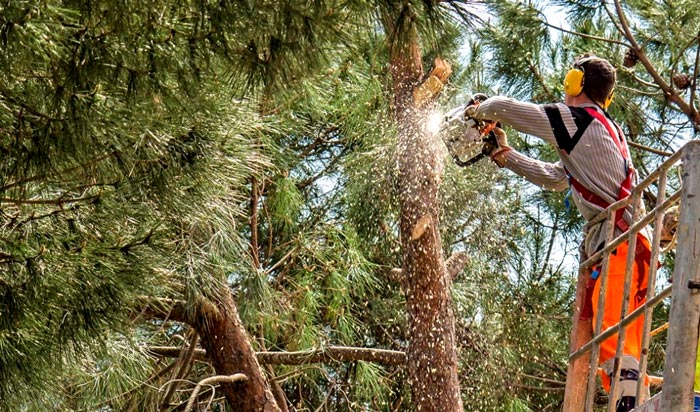The regulations within the Centennial Tree Ordinances are established to regulate the removal of trees, aiming to enhance tree canopy and promote environmental preservation.
Due to this, certain trees will require a permit before removal in Centennial City.
Below you will find a summary of tree removal ordinances to help you understand what trees need a permit and penalties for breaching these guidelines.
The full legal ordinance is here: Centennial Tree guidelines

What we cover
ToggleDo I need a permit when removing a tree in Centennial City?
Not all trees need a permit.
A dead, broken, and infested tree endangers other trees’ well-being, and therefore, as per the rules and regulations in Centennial, such trees need to be removed. Therefore a permit only applies to healthy trees.
It is unlawful and nuisance for a property owner to permit a dead, diseased, broken, or insect-infested tree. This is because it endangers the well-being of the other trees. However, mere aesthetic or unsightliness concerns constitute not a nuisance under the Centennial City laws.
Still not sure? Try this shortcut
If you are still unsure, it might be best to speak to local tree services. They are all up to date on local land clearing laws and would be happy to give you free advice.
It’s worth noting that tree services are unable to remove trees illegally as they would face heavy fines, so giving you correct information is in their best interests also.
Try this FREE Service

Go Tree Quotes is a FREE service that matches you with the 3 top-voted local tree services. Based on hundreds of votes by previous customers, we rank local services ensuring you get great service at low prices.
Step 1: Scroll to the top of the page and enter your Zipcode.
Step 2: Hit the orange button and proceed to answer a few quick questions about your tree job.
Step 3: Top-voted local tree services get in touch with some great advice and priced estimates.
There is no obligation to hire any of the tree services that we match you with.
Under what circumstances, a public tree should be removed?
You can only remove a public tree if:
- The tree is dead or dying.
- It is infested with parasites and poses a threat to spread.
- If it is an obstruction to the property
- In case it interferes with a public utility, may it be water pipes, sewer lines, or electric cables.
- If it poses a threat or risk to the public
- If it blocks warning signals and traffic lights.
Do I need the notice to remove a tree from private property?
Yes. If your tree grows between an adjacent street and your property line, you will need a written notice to trim or get rid of the tree. The statement, however, includes a specific place in the property. If the tree is healthy, ensure you get a permit before working on the tree.

Who pays for the tree removal cost in Centennial City?
If the tree to be removed is on private property yet obstructs the public, you’re liable, and you cater to the expenses to remove that tree. In case the tree is public property, the council incurs the cost of maintenance practices such as pruning, tree removal, or stump removal. It is the responsibility of the commission to cater for all expenses incurred in maintaining that tree.
City responsibility on trees in Centennial City
Centennial’s city is devoted to ensuring that the environment with all trees, mostly street trees, stays in shape and healthy.
As a result, the city is responsible for tree trimming, pruning, removal, and maintenance of all city trees. The council has the power to protect, adapt, and restructure rules and regulations governing tree removal for both public and private properties.
All expenses incurred during the cleanup and removal of danger-posing trees are paid by the city including the replacement costs.
What is contained in a tree management plan?
A tree management plan contains the following:
- A document(s) containing an inventory of publicly managed and/or owned trees
- An assessment of the publicly owned trees. This includes the health state.
- A simple description of the maintenance needs of all trees on the public property.
- Strategies put in place to remove diseases, insect-infested trees, or dead trees consistently.
Tree Services by City in CO
Tree Removal Denver
Tree Removal Loveland
Tree Removal Windsor
Tree Removal Fruita
Tree Removal Colorado Springs
Tree Removal Broomfield
Tree Removal Erie
Tree Removal Steamboat Springs
Tree Removal Aurora
Tree Removal Grand Junction
Tree Removal Evans
Tree Removal Federal Heights
Tree Removal Fort Collins
Tree Removal Castle Rock
Tree Removal Golden
Tree Removal Firestone
Tree Removal Lakewood
Tree Removal Commerce City
Tree Removal Louisville
Tree Removal Fort Morgan
Tree Removal Thornton
Tree Removal Parker
Tree Removal Montrose
Tree Removal Frederick
Tree Removal Arvada
Tree Removal Littleton
Tree Removal Durango
Tree Removal Castle Pines













